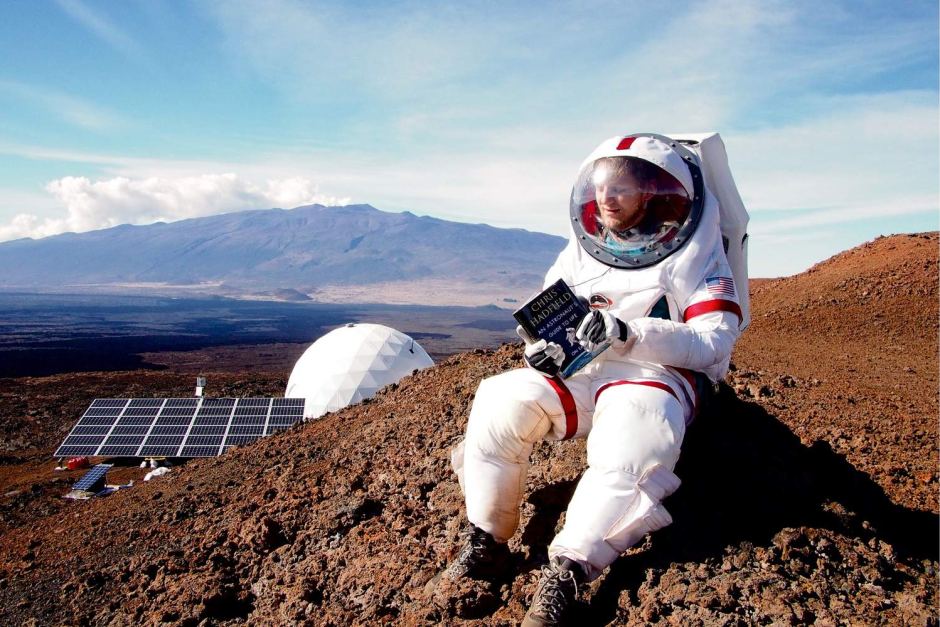Beginning in the 1960s, freelance speleologist Michel Siffre embedded himself in glaciers and underground caves in an attempt to understand sensory privations astronauts might experience on long missions. It was dangerous and not just psychologically. Today’s “missions to Mars,” test runs in isolation like NASA’s one-year HI-SEAS project which just concluded in Hawaii, aren’t nearly as fraught. Only time will tell, however, if they’re an acceptable spacesuit dress rehearsal. The multinational HI-SEAS crew, having now “returned,” thinks the historic travel to Mars will be manageable, which it probably is, though it’s still a question as to whether humans need to be making such voyages right now.
From an un-bylined AP report:
HILO, Hawaii (AP) — Six scientists have completed a yearlong Mars simulation in Hawaii, where they lived in a dome in near isolation.
For the past year, the group in the dome on a Mauna Loa mountain could go outside only while wearing spacesuits.
On Sunday, the simulation ended, and the scientists emerged.
Cyprien Verseux, a crew member from France, said the simulation shows a mission to Mars can succeed.
“I can give you my personal impression which is that a mission to Mars in the close future is realistic. I think the technological and psychological obstacles can be overcome,” Verseux said.
Christiane Heinicke, a crew member from Germany, said the scientists were able to find their own water in a dry climate.
“Showing that it works, you can actually get water from the ground that is seemingly dry. It would work on Mars and the implication is that you would be able to get water on Mars from this little greenhouse construct,” she said.•

